Intelligent PCB 4.0 by UHF RFID technology
- Details
- Hits: 6412
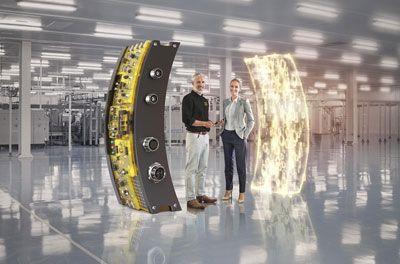 Circuit boards are a basic component of electrical devices, cars, robots, smartphones, tablets and the like. They must therefore be reliable, meet increasing quality requirements, and yet the manufacturing costs should decrease with the increasing complexity of the end product. Thus, the circuit board itself and its manufacture are changing. Thanks to Harting's UHF RFID technology, the electronic component can now speak and think for itself.
Circuit boards are a basic component of electrical devices, cars, robots, smartphones, tablets and the like. They must therefore be reliable, meet increasing quality requirements, and yet the manufacturing costs should decrease with the increasing complexity of the end product. Thus, the circuit board itself and its manufacture are changing. Thanks to Harting's UHF RFID technology, the electronic component can now speak and think for itself.
One of the MES service providers in Germany orders a control board. Once the order has been entered, the order is scheduled, production is started and all relevant production and quality data are stored in the back-end system (a database). The complete process is controlled centrally from the leading backend system. Although the printed circuit board is recognized unambiguously during manufacture or with a lasered 2DCode, the printed circuit board does not know any process parameters or quality features.
Although very simplified, this is the classic process of creating a printed circuit board. In terms of the life cycle, however, this is far too expensive and inflexible and therefore not sustainable and thus suitable for industry 4.0. Nevertheless, there is a lot more industry 4.0 in a circuit board than many imagine.
Already during the production of the Rohleiterplatte, this receives a memory. In addition, it can actively influence all other processes - not just in production, but over its entire life cycle. A small UHF RFID chip with a small antenna structure makes this possible. Embedded in the circuit board this is not noticeable. The space requirement is comparable to an 2D code. From now on, the raw circuit board can already store production data at any time, such as the date of manufacture and characteristics such as thickness and number of layers. Of course, it can be uniquely identified - in the crowd and over relatively large distances: Ranges greater than 1 m are not unrealistic. Warehousing logistics processes can therefore already be optimized by automated (bulk) detection.
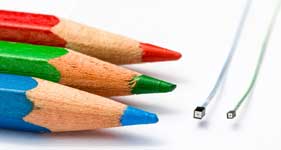 1 mm² image sensor enables the world's smallest digicam
1 mm² image sensor enables the world's smallest digicam
When the circuit board comes to the MES service provider, the assembler and finally to the SMD production line, the circuit board or the use logs on to the production line. Production machines with integrated UHF RFID technology make this possible. Circuit boards can be recognized, the stored information can be read out and updated or supplemented if necessary. When and on which machine with which production time are just a few parameters that can be stored. But special events such as relevant malfunctions within a production machine can also be saved.
If the circuit board or the benefit is manually fed to a new manufacturing process after being stacked, the circuit board can tell whether it is right here or perhaps has yet to go through another process step.
Easy to implement with UHF RFID technology
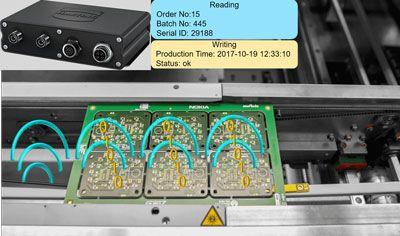 All this is made possible by state-of-the-art UHF RFID technology. Thanks to the coaxial cable-based Ha-VIS Locfield antenna and the flexible UHF RFID reader Ha-VIS RF-R350 from Harting, the realization is possible with little effort. The Locfield is a space-saving antenna that enables data communication with the circuit boards within the production line. The antenna array follows a coaxial conductor and enables full board speed communication with multiple boards in one board benefit. Thanks to the flexible and standard-compliant data processing of the UHF RFID reader-writer Ha-VIS RF-R350, the data can be preprocessed directly in the reader.
All this is made possible by state-of-the-art UHF RFID technology. Thanks to the coaxial cable-based Ha-VIS Locfield antenna and the flexible UHF RFID reader Ha-VIS RF-R350 from Harting, the realization is possible with little effort. The Locfield is a space-saving antenna that enables data communication with the circuit boards within the production line. The antenna array follows a coaxial conductor and enables full board speed communication with multiple boards in one board benefit. Thanks to the flexible and standard-compliant data processing of the UHF RFID reader-writer Ha-VIS RF-R350, the data can be preprocessed directly in the reader.
Reader and antenna can be easily integrated in new and old systems. The compact design and the high degree of protection IP67 also make retrofitting easier. Full data integration into the production systems is possible at any time, but not absolutely necessary. Of course, existing back-end systems can and should be integrated. The solution can grow very easily and flexibly with the demands and ideas of the PCB assembler and their customers.
The data storage on the RFID chip of the printed circuit board follows ISO standards and GS1 standards, which are already well-known in freight trading. Not only the ID of the circuit board itself is meant here, but also the process and manufacturing data, which are stored in the so-called user memory of the RFID chip. Everything is so transparent and can be easily used later by third parties.
Embedding the UHF RFID chip directly into the raw circuit board is certainly the most elegant solution, but not the only one. With the embedded chip, which is fully automated in the printed circuit board, thanks to a Beta Layout process, the entire life cycle and the entire production chain can be imaged directly in the printed circuit board. Even during the assembly process, the chip can be applied to the circuit boards as an SMD component. The company Murata offers with the Magicstrap corresponding UHF RFID chips or transponders.
Once equipped with the UHF RFID technology, this can, of course, be used on demand for a whole circuit board life. In addition to warehouse logistics applications, because a bulk detection of multiple boards at once is possible, for. B. repair processes can be optimized. Even if the printed circuit board no longer works or can no longer be switched on, stored information such as delivered firmware versions can still be queried.
In addition, the information can also easily query if the board was already installed in a finished product. As long as the housing is not completely made of metal and certain basic physical principles are adhered to, the information contained in the RFID chip can continue to be used and updated. Until disposal of the printed circuit board, the possibilities of the UHF RFID technology are available and can enable and improve various applications.
Still theory or already practice?
 Is this all plain theory or is it already being implemented? Nokia is already taking advantage of UHF RFID-based PCB manufacturing in its new modular 4.0 production line. The first products produced there are already equipped with UHF RFID transponders. The machines used by various manufacturers, including a reflow soldering system from Rehm Thermal Systems, are equipped with the described UHF RFID products from Harting and thus meet the requirements of an industrial 4.0-capable printed circuit board production.
Is this all plain theory or is it already being implemented? Nokia is already taking advantage of UHF RFID-based PCB manufacturing in its new modular 4.0 production line. The first products produced there are already equipped with UHF RFID transponders. The machines used by various manufacturers, including a reflow soldering system from Rehm Thermal Systems, are equipped with the described UHF RFID products from Harting and thus meet the requirements of an industrial 4.0-capable printed circuit board production.
ASM Assembly Systems GmbH & Co. KG also integrates RFID technology into their machines. But not only the machines and the circuit boards can be equipped with RFID technology. Consumables such as cleaning rollers that are used in the solder paste printers can also be recognized automatically. The company Vliesstoff Kasper offers corresponding products. Zollner Elektronik AG has been showing the possibilities of this technology for a long time in its technical center in Cham.
Ideas to use the UHF RFID technology even more versatile have many in the consortium. Among other things, the TU Dresden is involved in bringing about completely new module developments.
The UHF RFID technology makes the circuit board industry even more versatile, the manufacturing processes more flexible, safer and allows completely new application scenarios, up to the improvement of a sustainable handling of the raw materials of a printed circuit board, through proper disposal. The technology leader already has other ideas and will work together with his partners on their implementation.
The author Olaf Wilmsmeier is Business Development Manager RFID, Harting Technology Group.
You might also be interested in...
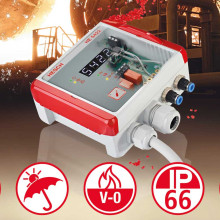
industrial housing | Indoor and outdoor control boxes
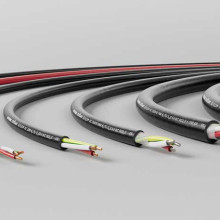
Electrical Wires | From cable to assembly
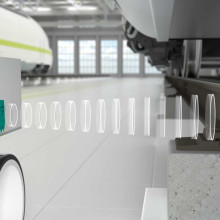
RFID and Barcodes | Industrial identification
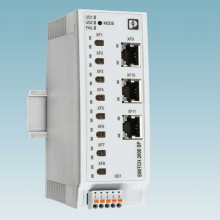
Ethernet switches | The data driver in the network
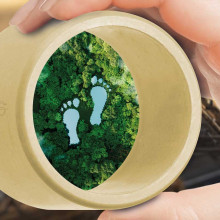
Reduce carbon footprint | That's how it's done!

